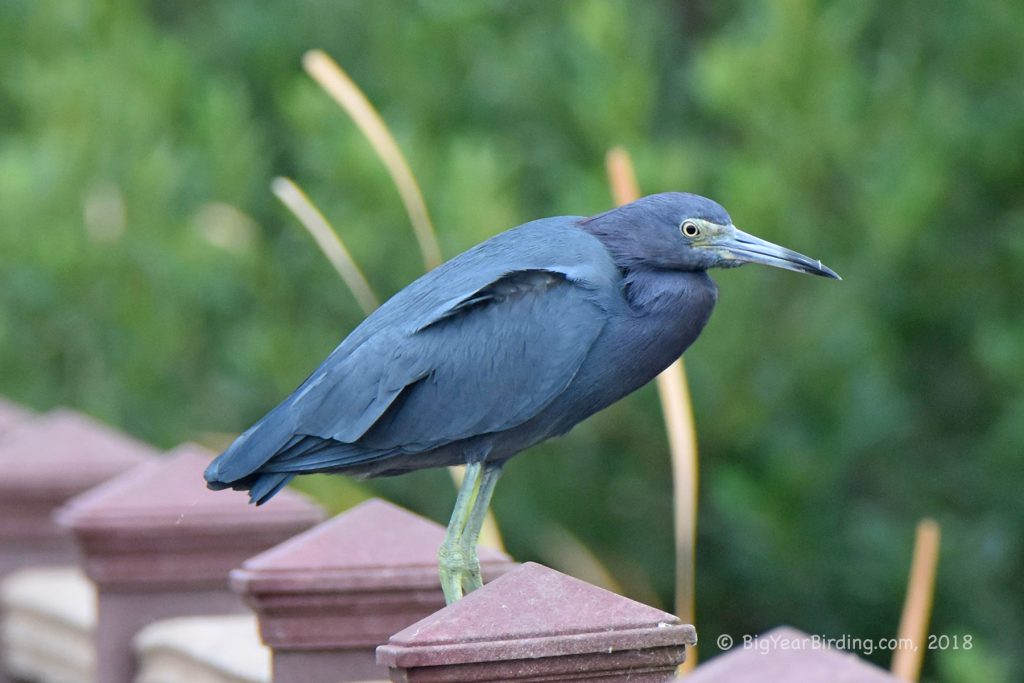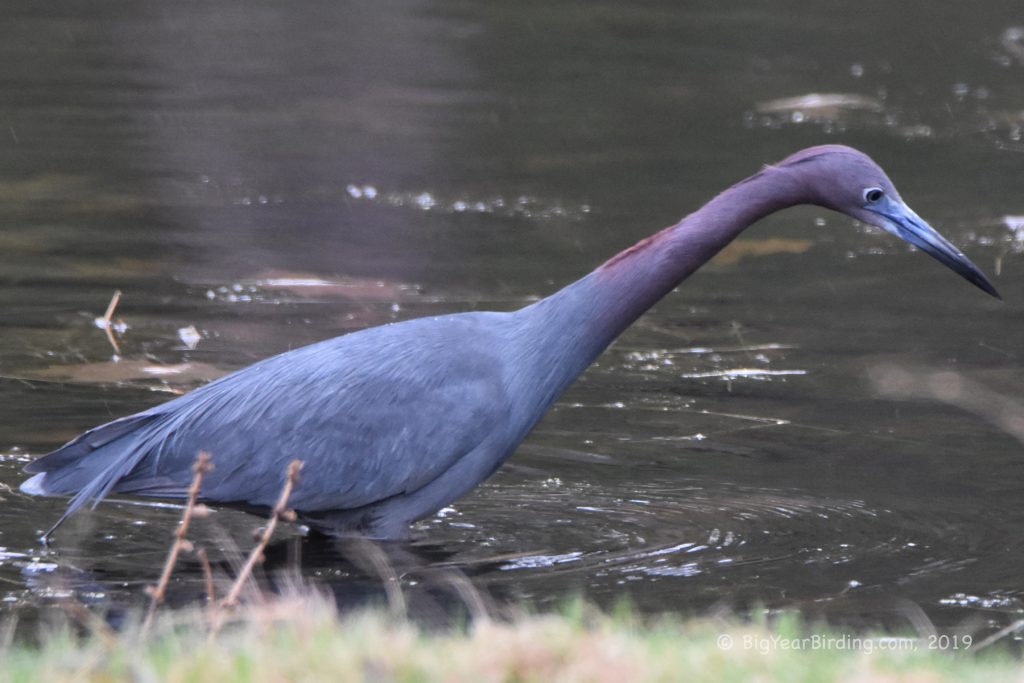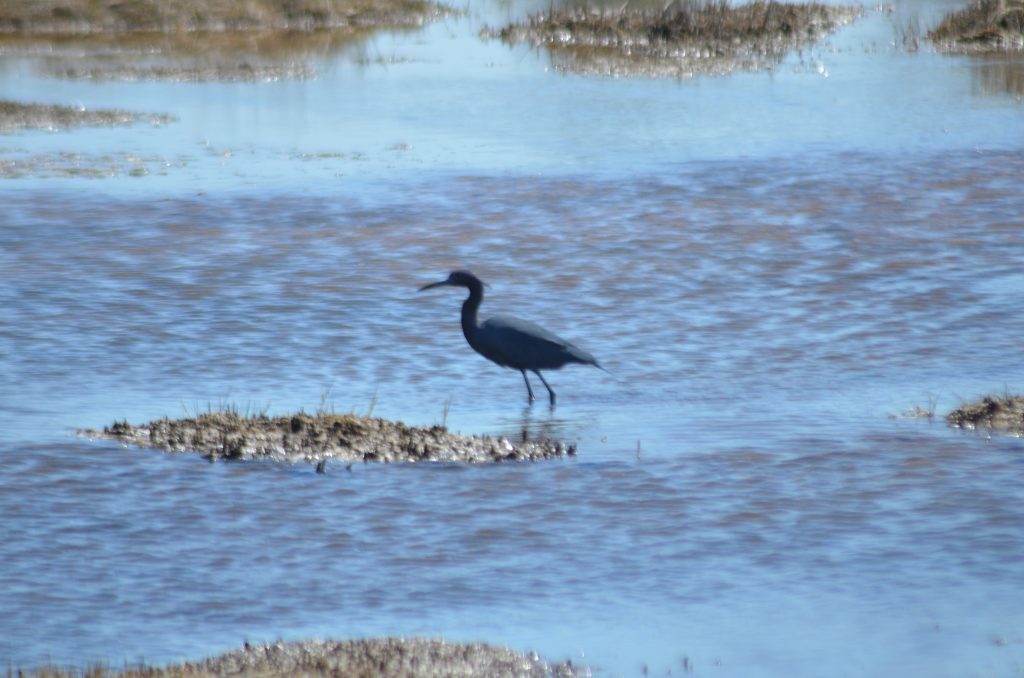
The Little Blue Heron is known for its distinctive coloration. Adult birds have dark blue-gray plumage with a maroon neck and head during breeding season. The legs and feet of the bird are usually yellow or greenish-yellow. Juvenile birds, on the other hand, have a white body and grayish-blue wings and tail. As they mature, their feathers gradually turn blue, and their bills and legs change from yellow to darker hues.

The Little Blue Heron is a non-migratory bird in most of its range, but populations in the northernmost parts of its range may migrate southward during the winter. The bird prefers to live in freshwater and brackish habitats, including marshes, swamps, and ponds, where it feeds on a variety of prey, including fish, crustaceans, and insects. It can also be found in coastal areas, estuaries, and salt pans.
The Little Blue Heron is an excellent hunter and uses its sharp bill to catch prey both in the water and on land. It has a patient and stealthy hunting style, often waiting motionless for long periods before striking at its prey. The bird’s feeding habits vary depending on the location and availability of prey, and it is known to forage in both shallow and deep water.

In addition to its hunting prowess, the Little Blue Heron is known for its unique breeding habits. During the breeding season, the bird forms colonies and builds nests in trees or shrubs near the water. Males and females share the responsibility of incubating the eggs and raising the chicks. The breeding season typically begins in March and lasts through August, with most nesting activity occurring in May and June.

